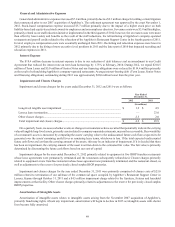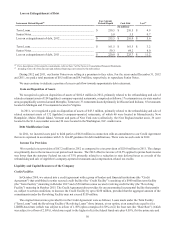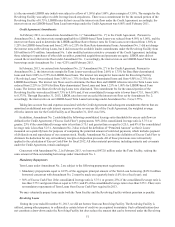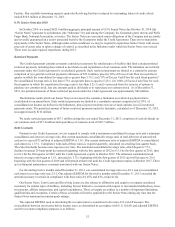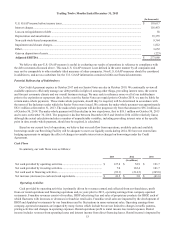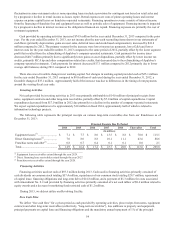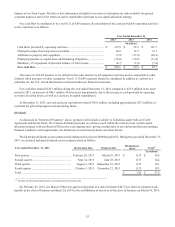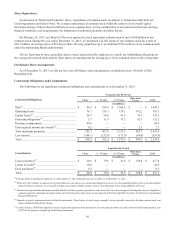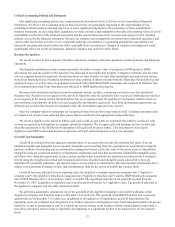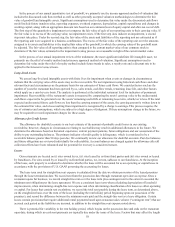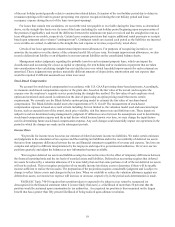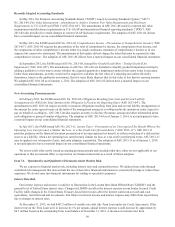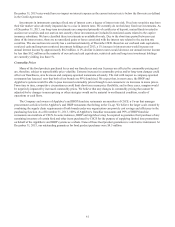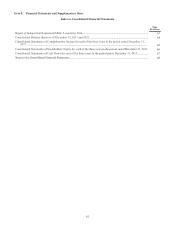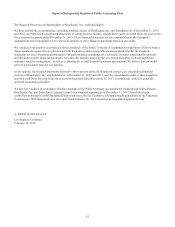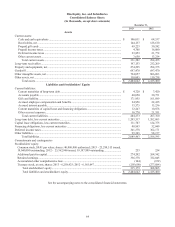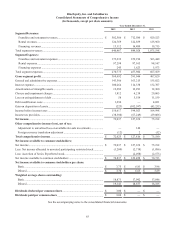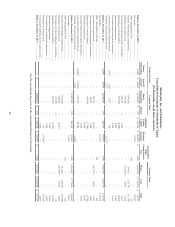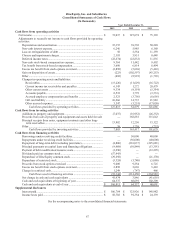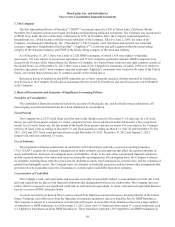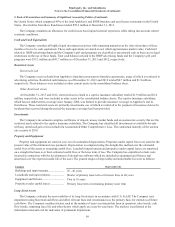IHOP 2013 Annual Report Download - page 80
Download and view the complete annual report
Please find page 80 of the 2013 IHOP annual report below. You can navigate through the pages in the report by either clicking on the pages listed below, or by using the keyword search tool below to find specific information within the annual report.59
of the rent holiday period generally relate to construction related delays. Extension of the rent holiday period due to delays in
restaurant openings will result in greater preopening rent expense recognized during the rent holiday period and lesser
occupancy expense during the rest of the lease term (post-opening).
For leases that contain rent escalations, we record the total rent payable or receivable during the lease term, as determined
above, on the straight-line basis over the term of the lease (including the rent holiday period beginning upon our possession of
the premises if applicable), and record the difference between the minimum rent paid or received and the straight-line rent as a
lease obligation or receivable, respectively. Certain leases contain provisions that require additional rental payments or receipts
based upon restaurant sales volume ("contingent rent"). Contingent rentals are accrued each period as the liabilities are incurred
or receivables are earned, in addition to the straight-line rent expense or revenue, respectively, noted above.
Certain of our lease agreements contain tenant improvement allowances. For purposes of recognizing incentives, we
amortize the incentives over the shorter of the estimated useful life or lease term. For tenant improvement allowances, we also
record a deferred rent liability or an obligation in our non-current liabilities on the consolidated balance sheets.
Management makes judgments regarding the probable term for each restaurant property lease, which can impact the
classification and accounting for a lease as capital or operating, the rent holiday and/or escalations in payment that are taken
into consideration when calculating straight-line rent and the term over which leasehold improvements for each restaurant are
amortized. These judgments may produce materially different amounts of depreciation, amortization and rent expense than
would be reported if different assumed lease terms were used.
Stock-Based Compensation
We account for stock-based compensation in accordance with U.S. GAAP governing share-based payments. Accordingly,
we measure stock-based compensation expense at the grant date, based on the fair value of the award, and recognize the
expense over the employee's requisite service period using the straight-line method. The fair value of each employee stock
option and restricted stock award is estimated on the date of grant using an option pricing model that meets certain
requirements. We currently use the Black-Scholes option pricing model to estimate the fair value of our share-based
compensation. The Black-Scholes model meets the requirements of U.S. GAAP. The measurement of stock-based
compensation expense is based on several criteria including, but not limited to, the valuation model used and associated input
factors, such as expected term of the award, stock price volatility, risk free interest rate and forfeiture rate. These inputs are
subjective and are determined using management's judgment. If differences arise between the assumptions used in determining
stock-based compensation expense and the actual factors which become known over time, we may change the input factors
used in determining future stock-based compensation expense. Any such changes could materially impact our operations in the
period in which the changes are made and in subsequent periods.
Income Taxes
We provide for income taxes based on our estimate of federal and state income tax liabilities. We make certain estimates
and judgments in the calculation of tax expense and the resulting tax liabilities and in the recoverability of deferred tax assets
that arise from temporary differences between the tax and financial statement recognition of revenue and expense. Tax laws are
complex and subject to different interpretations by the taxpayers and respective governmental authorities. We review our tax
positions quarterly and adjust the balances as new information becomes available.
We recognize deferred tax assets and liabilities using the enacted tax rates for the effect of temporary differences between
the financial reporting basis and the tax basis of recorded assets and liabilities. Deferred tax accounting requires that deferred
tax assets be reduced by a valuation allowance if it is more likely than not that some portions or all of the net deferred tax assets
will not be realized. This test requires projection of our taxable income into future years to determine if there will be taxable
income sufficient to realize the tax assets. The preparation of the projections requires considerable judgment and is subject to
change to reflect future events and changes in the tax laws. When we establish or reduce the valuation allowance against our
deferred tax assets, our income tax expense will increase or decrease, respectively, in the period such determination is made.
FASB ASC Topic 740-10 requires that a position taken or expected to be taken in a tax return be recognized (or
derecognized) in the financial statement when it is more likely than not (i.e. a likelihood of more than 50 percent) that the
position would be sustained upon examination by tax authorities. A recognized tax position is then measured on the largest
benefit that has a greater than fifty percent likelihood of being realized upon ultimate resolution.


